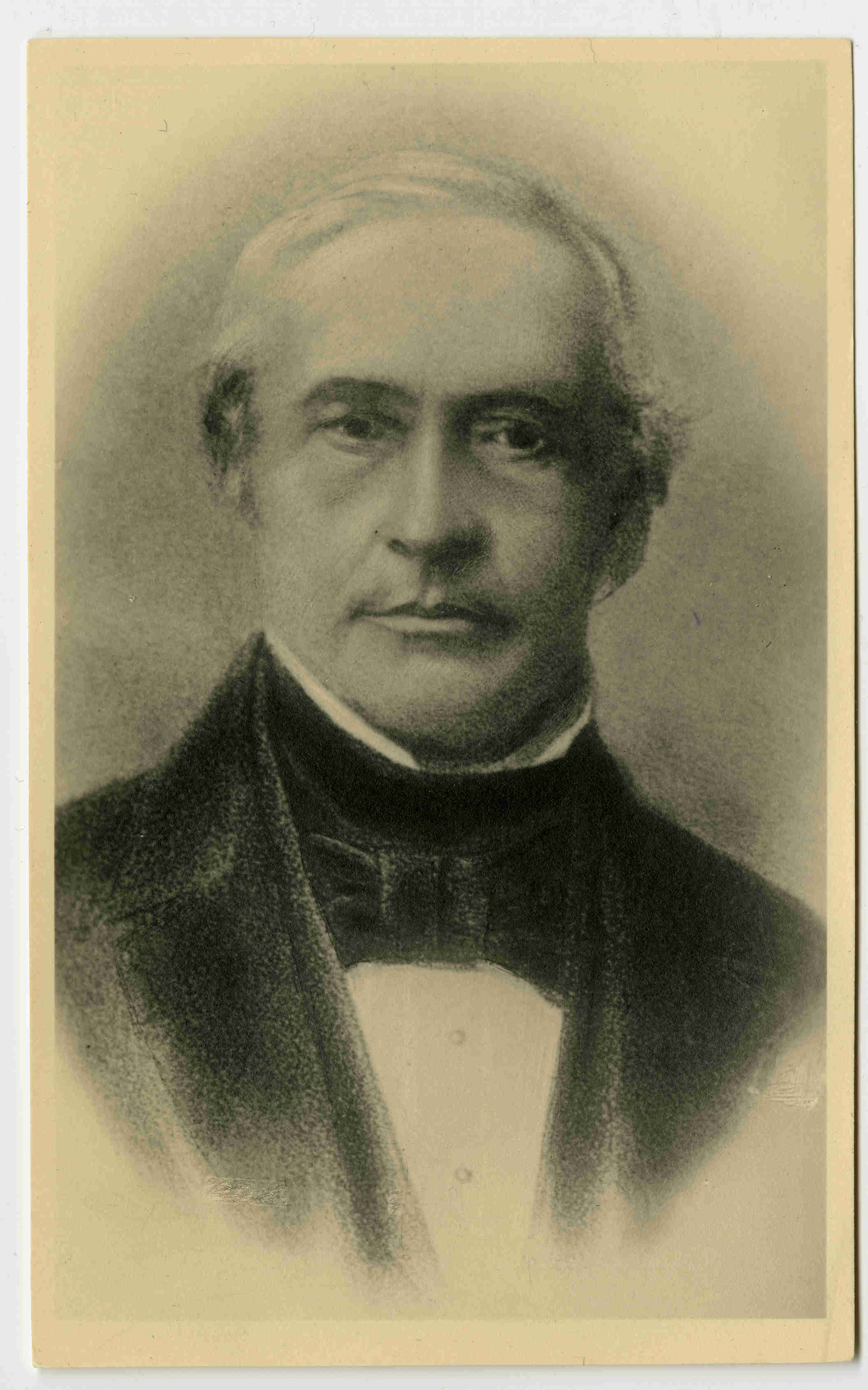
Eduard Ahrens
Eduard Ahrens (3. IV / 22. III 1803 – 19./7. II 1863) was a Baltic-German pastor and scholar of the Estonian language. The grammar of Estonian that he compiled, based on Finnish, replaced the earlier orthography, based on German and Latin, and formed the basis of the new orthography still in use today.
Ahrens was born in Tallinn, the son of a surveyor. From 1811 to 1819 he attended the Tallinn Dome School, and from 1819 to 1823 the faculty of theology at the University of Tartu. Initially he worked at Pikavere Manor as a tutor. In 1832-1833 Ahrens visited Germany and briefly France for self-improvement. From 1833 to 1837 he was a tutor at Vana-Vigala Manor. From 1837 until his death he was pastor of Kuusalu. In 1860 he was confirmed as dean of Ida-Harjumaa county. For his work in the fields of Estonian language and folklore Ahrens was elected as a honorary member of the Estonian Learned Society, but because of his disagreement with the president of the Society, F.R. Faehlmann, the title was withdrawn in 1848. From 1842 he was a member of the Ehstländische Literärische Gesellschaft (a Baltic German scientific body which functioned in Tallinn from 1842 to 1940). He died at Kuusalu and was buried in the cemetery there. In 2017 a monument to Eduard Ahrens was unveiled at Kuusalu. The same year there was a language conference held at Kuusalu dedicated to Ahrens, which is due to be made into an annual event.
At the end of the 18th century language scholars began to pay more attention to the evident similarities between the Estonian and Finnish languages. In his grammar book which appeared in 1780, August Wilhelm Hupel wrote that the Estonian language “appears to be a sister of Finnish”, though his own grammar still proceeded from Anton Thor Helle’s German-based orthography. The first to recommend the adoption of the Finnish writing system to Estonian was Adolf Ivar Arvidsson in J.H. Rosenplänter’s journal Beiträge in 1822. Later similar ideas were expressed by other scholars of the Estonian language, but it was Eduard Ahrens who was the first to print a systematic grammar, Grammatik der Ehstnischen Sprache Revalschen Dialektes (‘Grammar of the Tallinn Dialect of Estonian’), which appeared in 1843, and at the beginning of which Ahrens wrote the assertion that “the Estonian language is the daughter of the Finnish language”, thus taking Finnish as the model for his grammar.
At the same time Ahrens was striving for the Estonian literary language to be brought closer to the spoken tongue that the peasantry actually spoke. For this purpose he collected an abundance of samples of the popular language. It should be mentioned that Ahrens’ linguistic activity was not motivated by National Romanticism: the Estonian national movement and secular literature were not in Eduard Ahrens’ sights, nor were the social and economic conditions of the Estonian peasantry. He regarded as the main aim of his linguistic activity to spread God’s word more effectively by way of an improved Estonian liturgical language. Ahrens was sharply critical of F.R. Kreutzwald’s and F.R. Faehlmann’s nationalist strivings, and he also cast doubt on the folkloric authenticity of their works. (Today, folklore studies are on Ahrens’ side on this issue.) Kreutzwald was initially opposed to Ahrens’ new orthography, but he adopted it himself and applied it consistently after 1851, including his epic Kalevipoeg (1857-1861), contributing greatly to the spread of the new spellings.
The second, expanded edition of Ahrens’ grammar appeared in 1853. It also contained language samples in the new orthography. The old ortography, based on the Forselius / Hornung grammar of 1693, did not take account of several phonologically fundamental features of Estonian, such as the difference between short and long vowels. Ahrens’ grammar describes consonant gradation considerably more systematically than previously. The first work to appear in the new orthography was a book by Ahrens’ friend G.H. Schüdlöffel, pastor of Jõelähtme, Toomas Westen, Lapo rahva usu ärataja Norra maal (‘Toomas Westen, the awakener of faith among the Lapp people of Norway’, 1844). On Kreutzwald’s insistence, C.R. Jakobson also put Ahrens’ orthography to use in his popular books, which favoured the spread of the new writing system in turn. The new orthography finally won the day in the eighteen-seventies, when taken up by the Society of Estonian Men of Letters in its publications, and J.W. Jannsen’s newspaper Perno Postimees. The old system lingered longer in liturgical literature; the Bible appeared in the new script in 1889.
Ahrens was an authority on linguistic questions for the author of the Finnish Kalevala epic, Elias Lönnrot, who visited Ahrens at Kuusalu as the first stop on his visit to Estonia in 1844. All later Estonian grammars, including F.J. Wiedemann’s (1875) and K.A. Hermann’s (1884, the first one actually written in Estonian), are based on Ahrens’ work.
S. V. (Translated by C. M.)
Books in Estonian
Uue ajastu misjonilingvist. Eduard Ahrens 200. Koostanud ja toimetanud Kristiina Ross. Tallinn: Eesti Keele Sihtasutus, 2003, 525 lk. [Sisu: Eduard Ahrensi bibliograafia; ‘Johann Hornung, meie eesti kirikukeele looja. Rõhutu au jaluleseadmiseks. Kuusalu pastorilt Eduard Ahrensilt’, tõlkinud Kristiina Ross; ‘Eesti keele Tallinna murde grammatika. Esimene osa, Vormiõpetus’, tõlkinud Kristiina Ross; ‘Eesti keele Tallinna murde grammatika. Teine osa, Lauseõpetus’, tõlkinud Kristi Mets, Kristiina Rebane ja Mailis Salvet; ‘Eesti Piibli keelevead. Kokku kogunud ja eestlaste kirikuõpetajatele soovitanud Eduard Ahrens’, tõlkinud Kristiina Ross.]



